Mysterious symbols carved into Hawaii’s beach have reappeared after a decade, and they may have brought an ancient warning from 1,000 years ago.
The series of 26 petroglyphs, dating back to between 1000 and 1400 AD, emerged after the tide receded along the shoreline of Pōkaʻī Bay in Waianae around July 23.
The petroglyphs, mainly showing human-like stick figures, may have been a visual record of spiritual or historical events, but US archeologists said their exact meaning remains unclear due to a lack of written context.
Native Hawaiians, however, believe the symbols convey an ancestral warning about environmental changes, including oncoming disasters caused by climate change.
Native Hawaiian cultural practitioner Glen Kila said: ‘It’s telling the community that the ocean is rising.’
On Tuesday, an 8.8 magnitude quake struck Russia’s coast, leading to more tsunami alerts and the region’s largest volcano erupting hours later.
The earthquake was the sixth most powerful on record, and the strongest in Russia’s Kamchatka region since 1952.
The major earthquake sent tsunami waves to the coast of northern California and Washington on Wednesday morning, with a 3.6-foot wave being the highest recorded along the US West Coast.
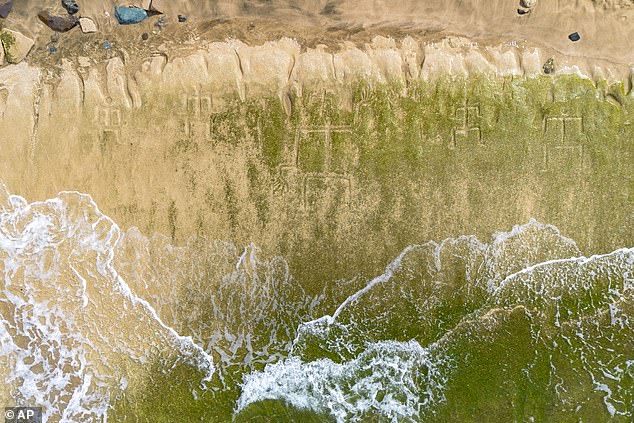
A set of 26 petroglyphs – carvings in rock surfaces – has been uncovered on the Hawaiian island of Oahu
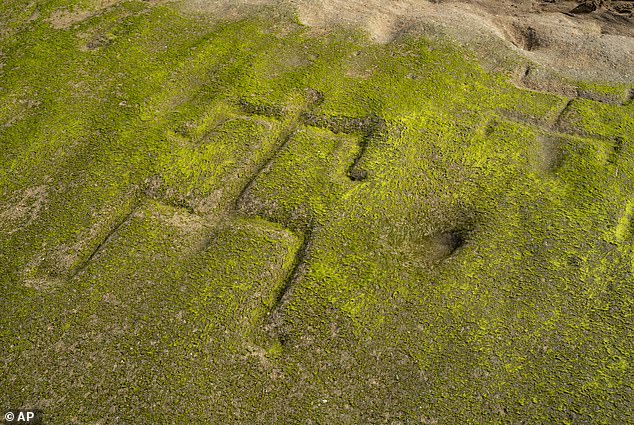
The carvings are believed to date back to between 600 and 1,000 years ago
It’s the first time the full set of 26 petroglyphs – carvings in rock surfaces – have been visible on the island of Oahu since 2016.
Seasonal ocean swells regularly peel away the sand covering the panel. However, these seasonal conditions typically only reveal parts of the ancient carvings between May and November.
The entire collection along Pōkaʻī Bay stretches about 115 feet, and has survived intense summer storms and even hurricanes before the changing ocean waves revealed them for the first time in a decade.
According to Kila, the unearthed petroglyphs may have been created by an early Polynesian settlement in Waianae over 1,000 years ago.
Laura Gilda, an archaeologist with the US Army Garrison Hawaii, gave a more conservative estimate of approximately 600 years.
Visitors to the beach were easily able to spot the giant symbols during low tide, when gentler waves washed over the green algae growing on the sandstone rock.
Archaeologists noted that 18 of the 26 petroglyphs appear to be anthropomorphic stick figures, simple drawings of human-like forms using lines to represent bodies, limbs, and heads.
Eight are believed to show male genitalia, but it’s unclear if the rest are showing men or women.
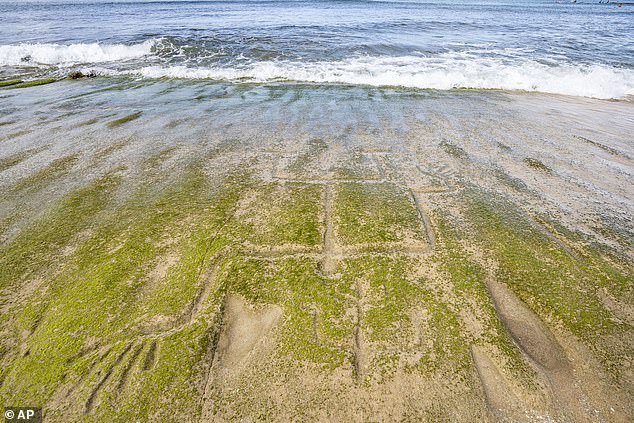
The largest petroglyph is believed to represent Maui, a Hawaiian demigod, during a religious ceremony
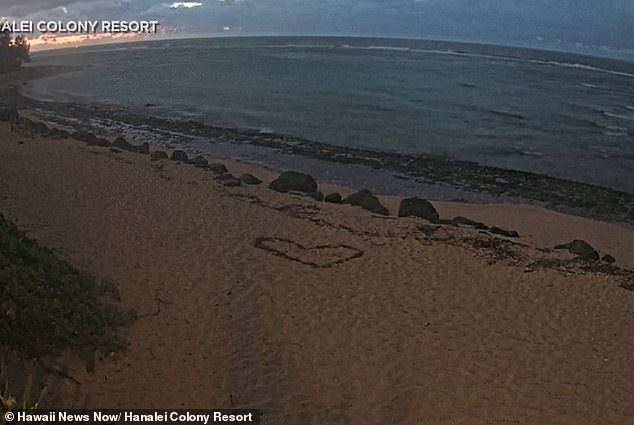
Hawaii was under a tsunami warning following the earthquake that hit Russia. Locals fled the coast in fear of five-foot waves
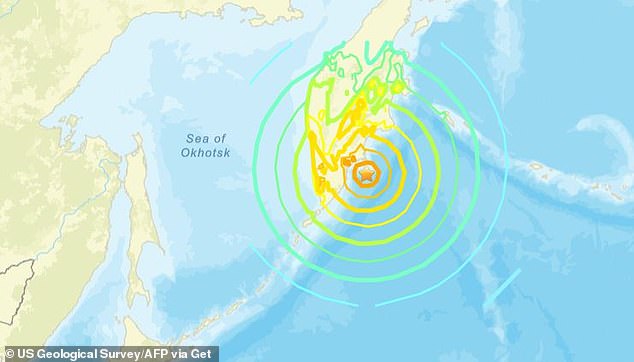
On Tuesday, an 8.8 magnitude quake struck Russia’s coast
Kila told the Associated Press that the panel appears to be telling a religious or ceremonial story.
Based on the teaching of the native Hawaiians, the largest of the petroglyph figures, which has one hand with fingers raised and the other pointing down, depicts the rising and setting of the sun.
‘My interpretation, just by looking at it, was an interpretation of Maui, the demigod, Maui,’ Kila previously explained during a 2017 interview.
Native Hawaiians have described Maui as a legendary figure in their mythology, known for his great size and strength.
According to local legends, he pulled the Hawaiian islands out from the sea with his fishhook in one story and snared the sun in a different tale.
Kila added that the fingers on the largest petroglyph’s raised hand appear to point east, just like the rising sun.
‘It’s a religious symbol. Like what we have for Christianity, the cross or the other symbols,’ the cultural practitioner continued.
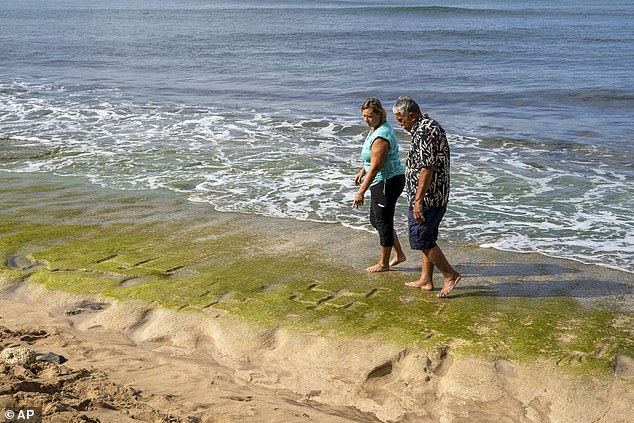
Laura Gilda (left) and Glen Kila (right) examine the petroglyphs, which were fully uncovered for the first time since 2016
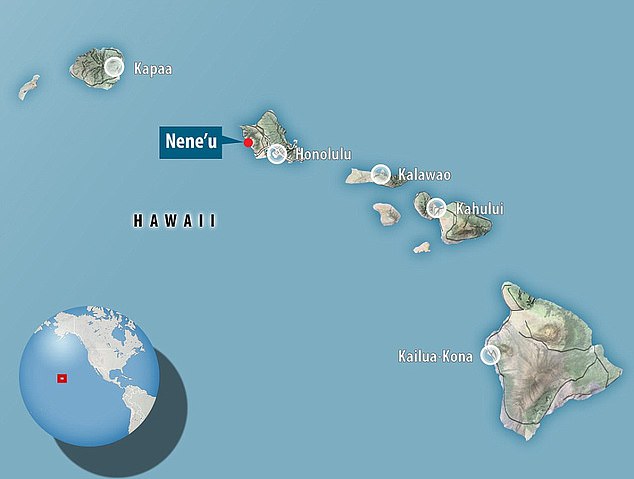
The petroglyphs were discovered on the Hawaiian island of Oahu, close to the village of Nene’u, and were likely carved by Polynesian settlers
While there doesn’t appear to be a direct connection between the recent megaquakes and the reappearance of the petroglyphs, native Hawaiians believe their return could be a sign that more natural disasters are nearing.
Hawaii’s Big Island and Oahu were both under a tsunami advisory Wednesday morning, but evacuation orders were quickly lifted.
The Hawaii Emergency Management Agency advised residents to remain at least 100 feet away from inland waterways or marinas connected to the ocean due to wave surges and possible flooding.
‘If possible, remove or deploy vessels to deep water,’ the agency said.












